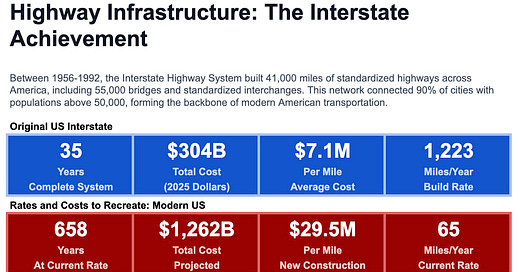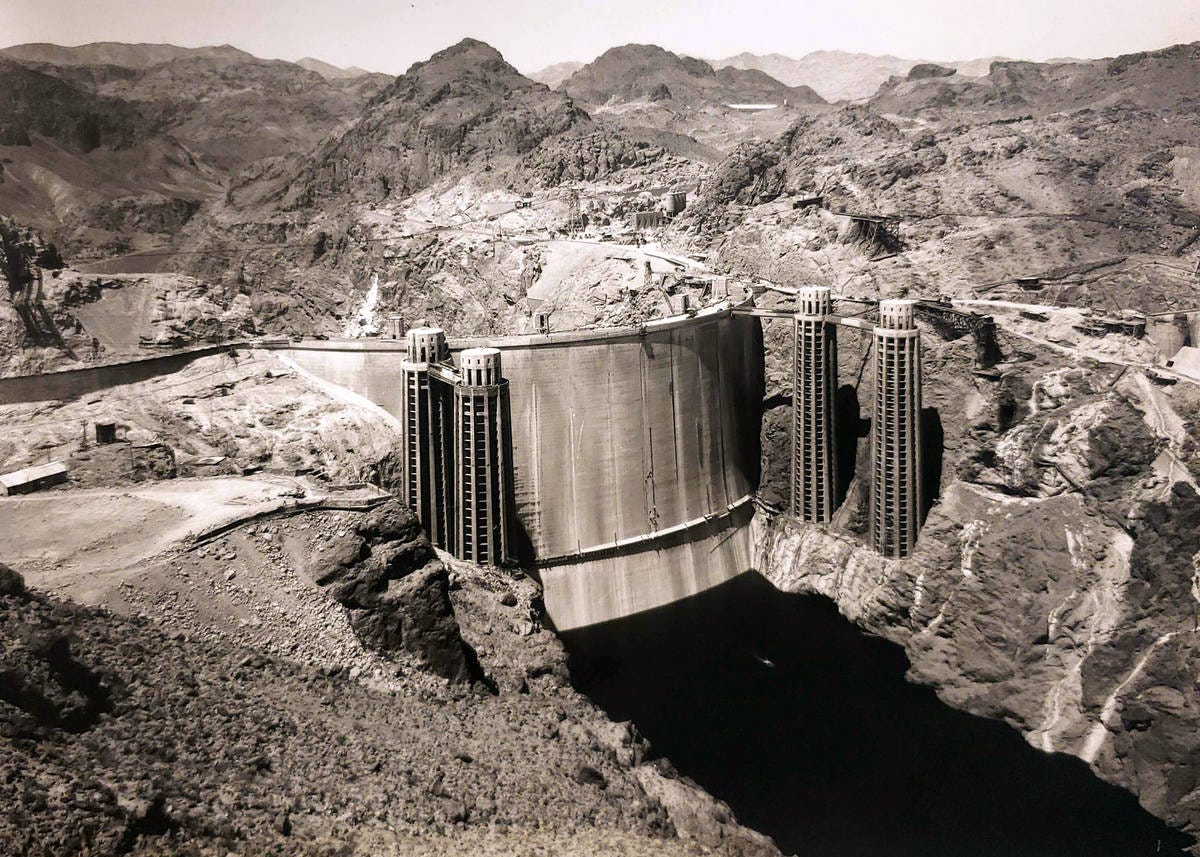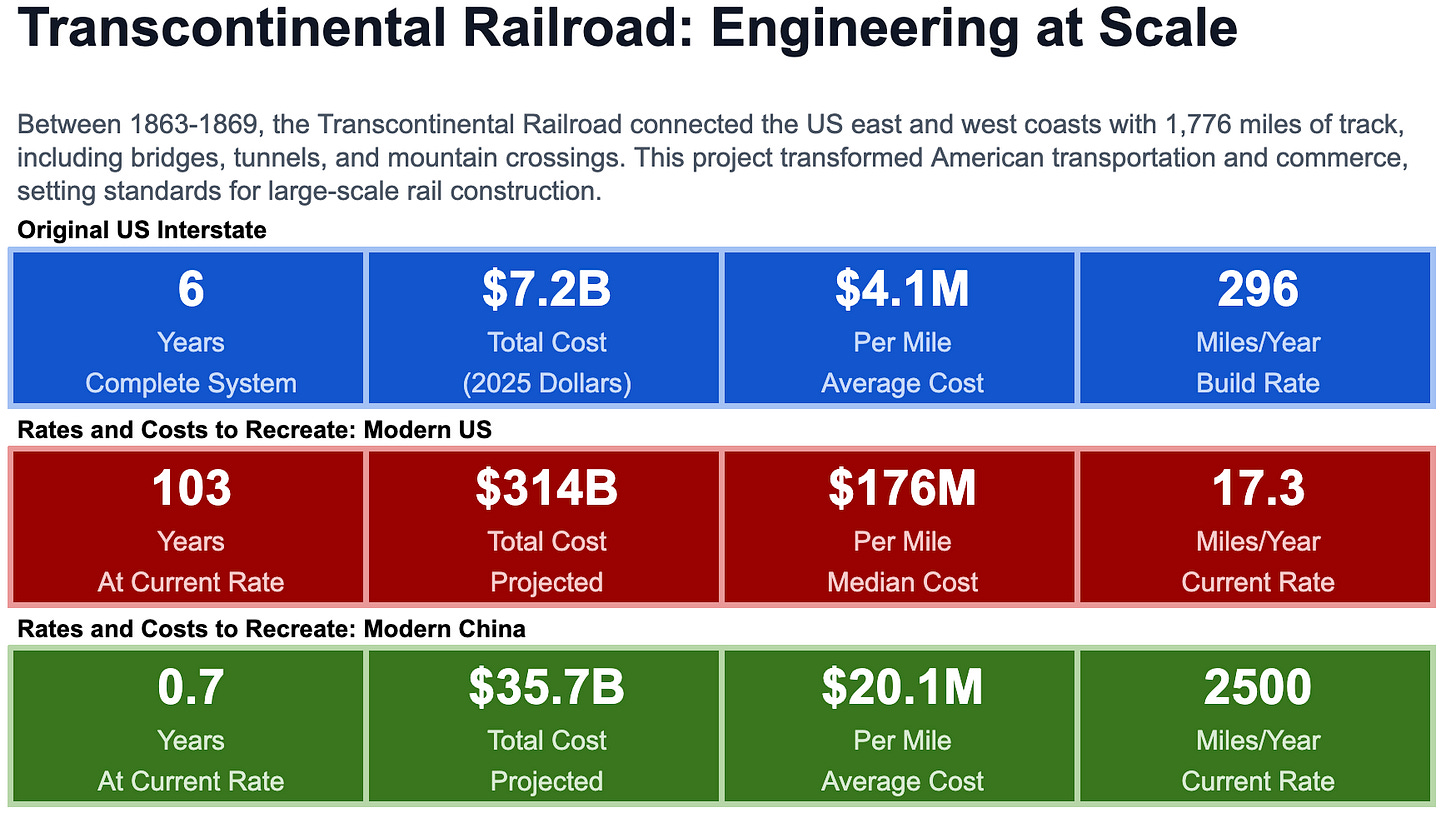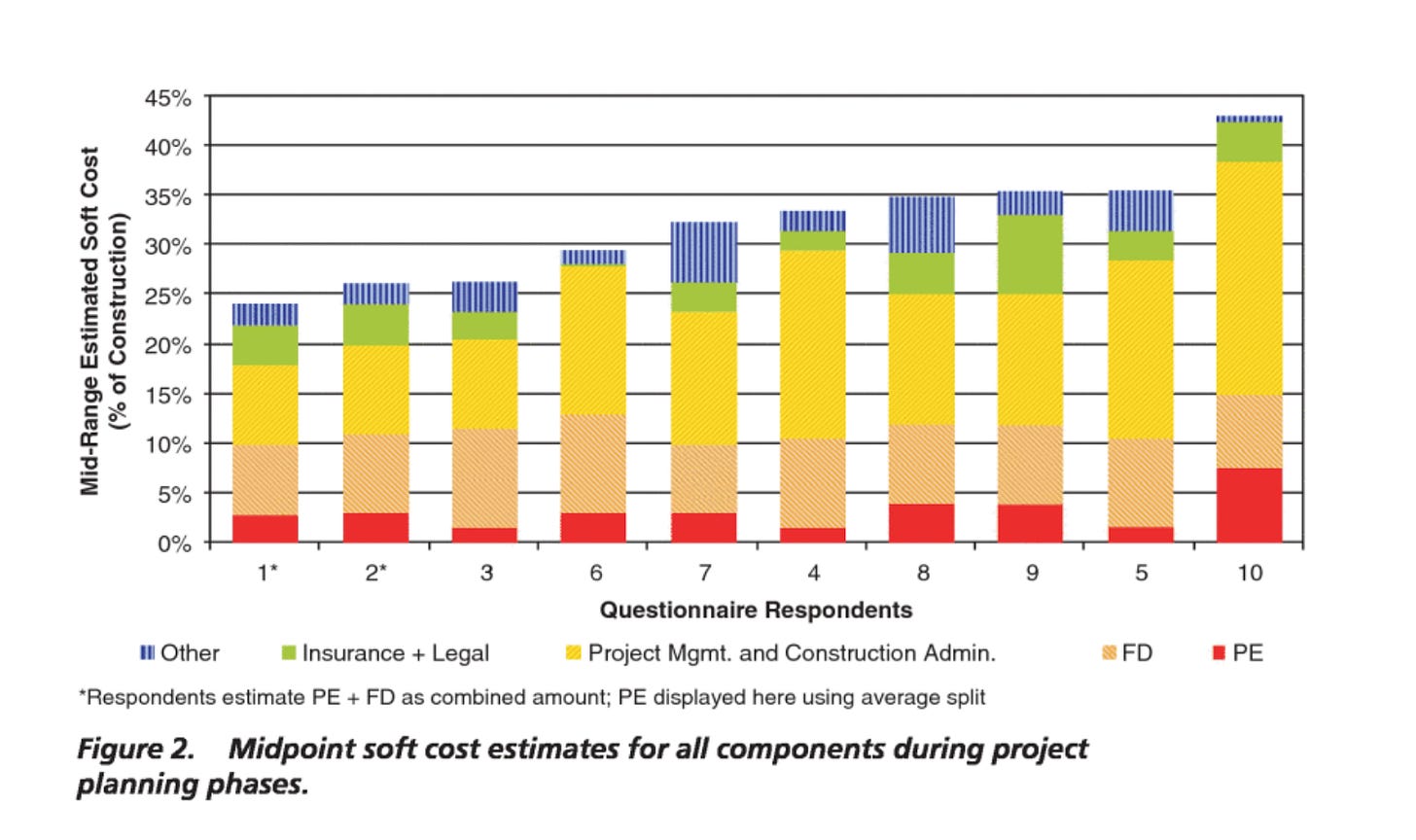From Gridlock to Road Rage: What Collapse Feels Like
We fight on the roads, in the lines, and online. But maybe the real problem isn’t us—it’s how we’ve stopped building a country that works.
I grew up surrounded by symbols of American might. In East Tennessee, stories from my family wove seamlessly into America's greatest infrastructure triumphs. Riding around with my uncle John, he'd point to sections of Interstate 81 cutting through the Appalachian Mountains, telling me where he ran heavy equipment while his brother, Uncle Darrell, surveyed. My uncle Bud would drive me past buildings he constructed with his own hands, pride in his voice. In the summer, I'd swim or fish above the TVA dams where my grandfather worked as a young man. My grandfather-in-law shared stories of power lines he’d strung with the REA through the hollers of Sneedville, Tennessee, bringing electricity to places private companies never would.
These weren't just jobs—they represented a shared national vision that transformed America, lifting millions into the middle class. The roads, dams, and factories they built provided a foundation for generations of American prosperity.
Long before joining Bernie Sanders or becoming involved in politics, I'd see maps of the Interstate Highway System or photos of the Hoover Dam and wonder, "How did America build something so ambitious?"
Recently, I became desperate to understand, I’ve spent months digging into historical and contemporary infrastructure projects. What I discovered was disturbing: America has largely lost its capacity for transformative construction.
Despite technological advancements that should make building faster, cheaper, and easier, our ability has drastically declined.
We feel it as parents. Our kids either spend over an hour on a school bus for what should be a 15-minute trip, or we sit in those endless car lines at drop-off and pick-up. Thank God for podcasts, but damn.
We all feel the consequences daily—in traffic jams, sky-high bills, and wasted hours navigating dysfunctional systems. Our inability to build efficiently costs us time, money, and quality of life. It breeds frustration, fatigue, resignation, and an anger we don't know where to direct.
This collapse explains why major initiatives like the Bipartisan Infrastructure Bill, the Inflation Reduction Act, and the CHIPS Act failed to deliver transformative results. Legislators and political leaders assumed their role ended with allocating funds. But private industry, gladly accepting the funds, often failed to deliver meaningful progress. Money flows into bureaucracy, consultancy fees, and endless red tape rather than tangible improvements.
The result? Neighborhoods and apartments spring up overnight, yet roads remain unchanged, leading to chaos. Power bills soar despite abundant free sunlight and wind energy. Roads are poorly designed, traffic patterns nonsensical. Each bizarre intersection and confusing roadway symbolizes our dysfunction.
Shocking Numbers
My detailed analysis uncovered stark realities that reveal the scale of America's decline in infrastructure building capacity.
Originally built between 1956-1992, the entire Interstate Highway System was completed in just 35 years—within a single generation. Today, replicating that effort at our current pace would take approximately 658 years—a staggering 94% drop in capacity. The original system was built at 1,223 miles per year; we now build an average of 65 miles yearly, based on Federal Highway Administration data from 2000-2023.
Meanwhile, China's infrastructure build rate suggests they could accomplish the same feat in just 7.1 years. They're building at 92 times our speed, calculated from their verified national highway construction rate of 5,994 miles per year since 2010.
Costs have also exploded absurdly. Adjusted to 2025 dollars, the Transcontinental Railroad (1863-1869) originally cost $4.1 million per mile. Today's comparable rail projects average $176 million per mile—a 4,193% increase. California's High-Speed Rail exemplifies this dysfunction, with over $10 billion spent in 15 years without completing a single mile of operational track.
These aren't guesses—they're calculated from verified data. And no—this isn't just inflation. That's already baked in. What we're seeing is something deeper: a system that simply can't produce anymore.
What Went Wrong?
Contrary to popular assumptions, this isn't primarily about inflation or authoritarian vs. democratic systems. Democracies like Spain, Japan, and Germany build efficiently and quickly. Spain has constructed 3,100 miles of high-speed rail since 1992. Japan consistently completes projects on time with 90% reliability. Their successes show that modern democracies can still deliver great projects.
What changed for America? Several critical factors:
Lost Expertise: Department of Labor statistics reveal apprenticeships dropped 76% since 1970. According to the American Society of Civil Engineers, the last U.S. heavy civil engineering program graduated its final class in 1987. Decades of lost expertise have left us unable to build at scale.
Administrative Bloat: Today's Environmental Impact Statements run tens of thousands of pages compared to the original 10-page statements of 1970. Modern projects face an average of 57 separate approval requirements compared to 5-7 in historic projects.
Litigation Gridlock: Major projects now face an average of 7.2 legal challenges before completion versus 0.2 in the 1960s. The average environmental lawsuit adds 5.7 years to project timelines.
Agency Dysfunction: Public agencies have become bureaucratic fiefdoms fighting each other for dollars. In New York, the Metropolitan Transportation Authority paid the Parks Department $11 million just to store construction equipment in a public playground.
The Consultant Racket: Around one-third of infrastructure budgets in America often get eaten up by compliance, consultants, and paperwork—not actual construction.
But here's the part we don't talk about enough: how business worked hand in hand with government to gut its own capacity—then moved in to sell it back to us at a premium. It's not just that we have too many consultants. It's that consulting has become the business. You make more money drawing up PowerPoints about bridges than actually pouring concrete.
The Human Cost
When we can't build efficiently, everything in our lives gets more expensive and scarce:
In 1950, a median home cost 2.2 years of income. Today, it's over 10 years.
College tuition once required just months of work; now it demands years.
Healthcare expenses once took a fraction of our earnings; today, they devour months of wages.
But perhaps the most profound cost isn't financial—it's psychological. We're no longer involved in building something bigger than ourselves. My uncles and grandfather took pride in pointing to what they built, in knowing they contributed to America's growth. Today, most Americans feel disconnected from any sense of national building or shared progress.
What’s the Solution?
My opinion is that fixing this requires much more than clever policy proposals. It requires a political revolution. We can't fix bridges, roads, or power grids unless we first fix our politics.
America desperately needs real political majorities—committed leaders in the House, Senate, and Presidency aligned around one urgent goal: rebuilding American capability. Without breaking political stagnation, every other idea is a fantasy.
If we can get our politics and government in order, we can embark on a Mission for America:
Launch massive worker and engineer training programs
Cut bureaucracy and set strict decision deadlines
Mandate domestic production for vital infrastructure components
Rebuild vocational education and apprenticeships
Shift resources from financial speculation into tangible infrastructure investments
My uncles didn't just build highways and buildings—they helped build a future for all of us. Now it's our turn. The next chapter of the American story is still unwritten. Will we put in the work needed to remember how to build again?
"The only limit to our realization of tomorrow will be our doubts of today. Let us move forward with strong and active faith." - FDR
-Corbin
Postscript
People always ask, "What's the solution?" Whether we're talking about healthcare, genocide, mass shootings, or our hollowed-out economy, my answer is the same: change who holds power. Not just the White House—Congress. That's where the real power lives in this system.
I've spent years fighting for that change. I worked on both of Bernie Sanders' presidential campaigns. I helped found Brand New Congress to replace incumbents. I co-founded Justice Democrats. I stood with AOC, first on the campaign trail, then in Congress. Has it worked yet? Not fully. But just because a revolution hasn't succeeded yet doesn't mean it's wrong.
If we want a different future, we have to back better people. Not just on election day—but every day after. They need to know we've got their back, and that they won't stand alone once they get there.
A united Congress with a clear vision and a willing president can bulldoze bureaucracy, outmaneuver corporate lobbyists, and override elite resistance. We don't need more policy memos or TED Talks. We need different people in power. And in this country, that still starts with Congress.








This was great, thank you for sharing. A couple things I was hoping to see but didn't so I'll share my entirely uneducated opinion as we're supposed to do in a comment section.
First, for all of the decline that you mentioned with regards to engineering, you left out what Americans lead the world in these days: whining & complaining! We love to complain about anything and everything but the minute solutions are proposed we start whining. Until Americans are led to believe that solutions are their best interest, all of this is just going to get worse.
Second is greed. I think there's a bit of that spread out through the piece but not specifically called out. The corporate greed has killed both innovation and in some cases the environment. We're going to be stuck with quick, cheaply built apartments for the foreseeable future.
Thanks again, Corbin. All the best.
It's a sad story how the advance of capitalism has hollowed out our communities. Your research tells a story of disintegration.
Added to the list of the failure to fund new and important infrastructure should be congressional favoritism and favor swapping in funding new projects by both parties.
I haven't done the research but adding another culprit here. The laws of nature apply to capitalism and money flows in the path of least resistance: leveraged buy outs and sell offs, sucking the vitality out of communities.
Getting people who have a social consciousness into Congress who are not beholden to the Democrat party is a big critical step. We must not replace oligarchical dominance with corporate dominance. We need to keep the drum beating on electing progressives. Thank you for keeping that focus up front.
Let's also jump in at the local levels and begin actually running our government in our states and communities. Having good people as local commissioners keeping a watch on where contracts are going, and pushing to upgrade our grids would be a big progressive step. And for gods sake, get on the school boards and bring the good literature back into our schools.